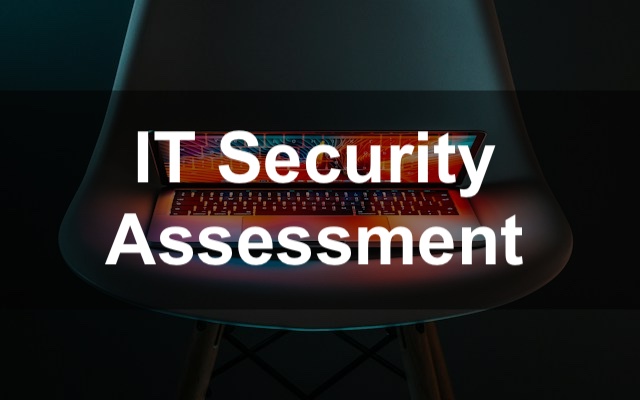In a world where technology reigns supreme, the importance of IT security cannot be overstated. Whether you’re a small business owner or a part of a large corporation, the security of your network should be a top priority.
In this blog post, we’re going to delve deep into the realm of IT security assessment, which a managed IT service provider can offer you. This is something that all businesses should consider to keep themselves safe and protected.
Learn More About Tech Issues Here:
Understanding the Basics of IT Security Assessment
Before we dive headfirst into the nitty-gritty of evaluating your network’s vulnerabilities, let’s get a handle on the fundamentals. At its core, an IT security assessment is like a health checkup for your digital infrastructure.
It’s the process of identifying, analyzing, and mitigating potential security risks to ensure that your network remains resilient in the face of evolving threats.
Why Does IT Security Assessment Matter?
Think of your network as a fortress guarding your digital assets. Just like a castle needs strong walls and vigilant guards, your network needs robust security measures. Cybercriminals are constantly evolving, devising new ways to breach your defenses.
An IT security assessment helps you stay one step ahead by pinpointing weaknesses and fortifying them.

https://unsplash.com/photos/a-desk-with-a-computer-monitor-and-keyboard-on-it-OVbeSXRk_9E
Check These:
Identifying Vulnerabilities
Now, let’s get down to the brass tacks of assessing your network’s vulnerabilities. This is the phase where we roll up our sleeves and start digging.
- Network Scanning: Think of this as the x-ray of your network. Specialized software scans your network, probing for weaknesses like an eager detective searching for clues.
- Penetration Testing: Here, ethical hackers (yes, they exist!) attempt to breach your network’s defenses. Their goal? To find loopholes before the real bad guys do.
- Asset Identification: You can’t protect what you don’t know you have. Asset identification is like taking inventory of your digital possessions. It ensures that nothing slips through the cracks.
- Risk Assessment: Not all vulnerabilities are created equal. Some are high-priority, while others may pose minimal risk. A risk assessment helps you prioritize what needs immediate attention.
Analyzing the Data
Once you’ve gathered all the data, it’s time to make sense of it. This is where the real detective work begins.
- Threat Modeling: Imagine you’re a spy plotting the moves of your adversaries. Threat modeling helps you anticipate potential attacks and devise strategies to counter them.
- Impact Analysis: What’s the worst-case scenario if a vulnerability is exploited? Understanding the potential impact on your organization is crucial for decision-making.
- Cost-Benefit Analysis: Resources are finite, and you can’t fix everything at once. A cost-benefit analysis helps you allocate your budget wisely by weighing the cost of mitigation against the potential damage.
Mitigating Vulnerabilities
Armed with a clear understanding of your network’s weaknesses, it’s time to roll out the fixes.
- Patch Management: Keep your software up-to-date. Software updates often contain patches that fix known vulnerabilities. Don’t skip them!
- Firewalls and Intrusion Detection Systems: These digital gatekeepers act as the bouncers of your network, ensuring that only authorized users gain entry.
- Employee Training: Your team can be your strongest defense or your weakest link. Regular cybersecurity training empowers your employees to recognize and thwart threats.
- Data Encryption: Encrypt sensitive data to make it unreadable to unauthorized eyes, even if they manage to breach your defenses.
Find Out More About Security Here:
Continuous Monitoring and Improvement
Cybersecurity isn’t a one-and-done deal. It’s an ongoing process. Here’s how to keep the fortress secure:
- Incident Response Plan: Prepare for the worst. Develop a plan to respond swiftly and effectively in case of a security breach.
- Regular Assessments: Don’t wait for trouble to come knocking. Regularly assess your network’s security to catch vulnerabilities before they’re exploited.
- Stay Informed: The world of cybersecurity is ever-changing. Keep abreast of the latest threats and security measures to adapt and evolve.
Check These:
Conclusion: Your Network’s Guardian
In the grand scheme of things, your network’s security is like a guardian, protecting your digital assets day in and day out. An IT security assessment is the trusty sword and shield that keep your guardian sharp and vigilant.
Remember, it’s not a matter of if but when cyber threats will come knocking. By proactively assessing your network’s vulnerabilities, you’re not only safeguarding your data but also your reputation and bottom line.
So, embrace the world of IT security assessment, not as a daunting task, but as a quest to fortify your digital fortress and keep your kingdom safe from the lurking cyber-dragons. Stay vigilant, stay secure, and let your network be the impenetrable stronghold that it’s meant to be.
